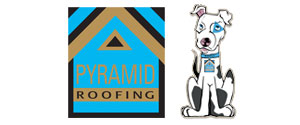- Do you subscribe to Dharma Dog Training’s Newsletter? You should.
- A Unique Campaign from The Humane Society of the United States
- Rabid bats in Omaha- Stay safe, prepared with these tips
- Springtime Activities in Omaha
- Mill Dog Monthly from Bailing Out Benji
- World Spay Day, Legislative Alert in Nebraska
- Attend the Nebraska Rescue Council’s monthly meeting this Saturday
- Five Hard-to-Ignore Reasons to Adopt!
- Paws in Pink to Benefit Breast Cancer Foundation
- VCA, Inc. Acquires MidWest Vet Specialists from Kansas State University
HOW TO WALK A DOG CORRECTLY

The appearance of a four-legged friend brings joy. The friendly wagging of the tail means devotion, boundless love, and a sea of emotions. Caring for the tail is made up of education and proper care. Let’s talk about walks. Dogs need them almost as much as food and water. And it’s not because it’s a “custom.”
Why walk your dog:
– Daily walks are about fresh air, movement, and physical activity;
– Socializing and interacting with your owner;
– Learning new skills and commands;
– Mental stability.
Sitting inside the four walls all the time does no good. A dog needs a change of pictures, just like a human.
BASIC RULES FOR WALKING:
– A collar and a leash are a must.
Teach the collar better from childhood. Gradually the pet will develop a connection between putting on the collar and going outside. The process can be accompanied by the words “Go for a walk!”. It will be a kind of ritual for the dog and, believe me, he will wait for this moment.
The collar should be fastened tightly, but not to rub the neck. You can check it easily by slipping your fingers under it. If the collar clasps correctly, you should be able to fit 1-2 fingers under it. This uncomplicated way of checking is jokingly called the “finger rule”.
– Determine which side of the leash your pet will walk on.
A basic rule that has historically been enshrined is that the pet should be on the left side. In real life, however, it is as individual as wearing a watch on your hand. There are times when a large dog is difficult to hold with the left, less active hand. Choose the side that is easier for you to control and, if anything, yank your pet back. But cynologists do not recommend changing sides often. The dog must get used to one side.
– Control the situation.
Remember that you walk your dog, not he walks you. You must show him that you are in control of your movements and behavior, or else he will behave the way he wants. When you first start walking and head for the walk, it’s best to give him a short leash with some slack, so he walks quietly by your side. A little slack is needed to jerk the dog’s attention in case of an emergency. A short sharp jerk (no need to make a strong jerk) – is a signal that you can’t “run ahead of the locomotive”, that is, you can’t rush ahead of the owner or distract attention to other things like cyclists, cars, other dogs or cats. Separately, let’s explain why the owner must go out of the house (apartment) first and go back in after the walk. This is due to the instinct of the dog. The master goes first, in this case, the person who opens the door and is the first to step outside. The situation when the pet flies out of the apartment runs down the stairs, and his master rolls after him – to put it mildly, not right.
– Change the route of your walk.
Firstly, it’s variety. Secondly, the pet will remember several ways home at once. And in case of force majeure, it will be easier for him to go back.
– Talk to your pet.
The dog needs to hear your voice. And it’s not just because dialogue brings him closer. When your dog behaves well and does everything right, he can and should be praised and encouraged. And when the pet gets into mischief, barks without reason, or does what’s forbidden – tell him in a stern voice that it’s forbidden. When he does something unacceptable, give him a firm tug on the leash.
– Choose a place to walk.
Walk there, where the pet can run and frolic without disturbing other people. It is clear that there are almost no special areas, so everyone finds his place. For example, it can be vacant lots, remote parts of parks, and wide unpopulated streets. Where exactly you should not walk: near schools and kindergartens, on playgrounds, and near dusty busy highways.
– Keep walking intervals to a minimum.
It is recommended to walk adult dogs at least 2 times a day. Let’s say 2 times is optimal, with no more than 12 hours between walks. Puppies up to 7 months old are walked more often, on average 3-4 times, so that the young pet gets used to walks and gets into the regime. Everything else is individual. For example, if the dog has diseased kidneys or bladder, more frequent walks will be required.
– Length of walks.
Let’s write the minimum, which is highly desirable. 10-15 minutes in winter and 20-25 minutes in summer. Anything longer goes to the pet’s health and the owner’s karma. The exceptions are age-old pets who have a hard time moving due to their health and miniature “pocket” breeds that lead indoor lifestyles.
If a pet is energetic by its character or breed (for example, huskies need constant movement), twenty minutes is not enough. For them, 20 minutes is like a drop in the ocean. Active dogs need long walks – at least 1 hour at a time (and ideally 2).
– When to walk: before or after dinner.
There’s no definite answer to this question, as it depends on the dog’s regime, metabolism, habits, and abilities.
Still, more experts advise walking before feeding, so that after returning home.
Conclusion:
A dog is man’s best friend and is the one who keeps you safe, even when pets control begins. A dog can become a member of your family because many people become attached to them and consider them their friends. A dog is easy to train if you use the right methods because it all depends on the trainer. But do not forget that it requires a lot of responsibility because it is also a living creature.
Latest News
-
How to Make Your Rescue Pet as Comfortable as Possible
Did you bring home a new pet from a shelter...
- Posted 1 week ago
- 0
-
How Having A Pet Can Change Your Life
Having a pet can open your heart in ways that...
- Posted 6 months ago
- 0
-
How To Improve The Life Of Your Senior Pet
Do you have an elderly fur baby and want to...
- Posted 6 months ago
- 0
-
Springtime Activities To Enjoy With Your Furry Friends
Are you preparing for warmer weather and want some ideas...
- Posted 7 months ago
- 0
-
Pros And Cons Of Microchipping Your Pets
Have you considered whether your pets should be microchipped and...
- Posted 8 months ago
- 0
-
The Best New Fun Toys For Dogs And Cats
The Best New Fun Toys For Dogs And Cats Did...
- Posted 8 months ago
- 0
-
Heartfelt Ways To Show Your Pet You Love Them
Did you know there are more ways to show your...
- Posted 9 months ago
- 0


















You must be logged in to post a comment Login